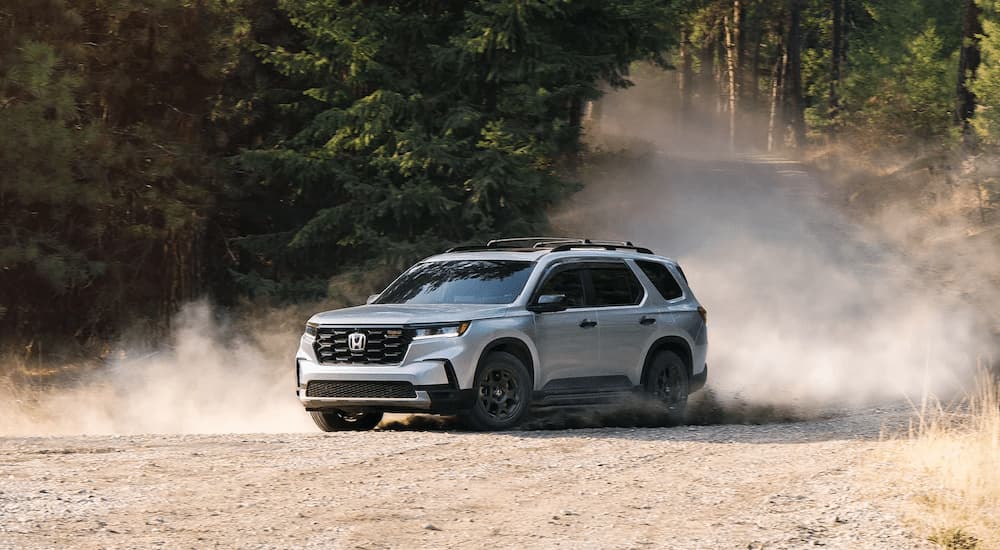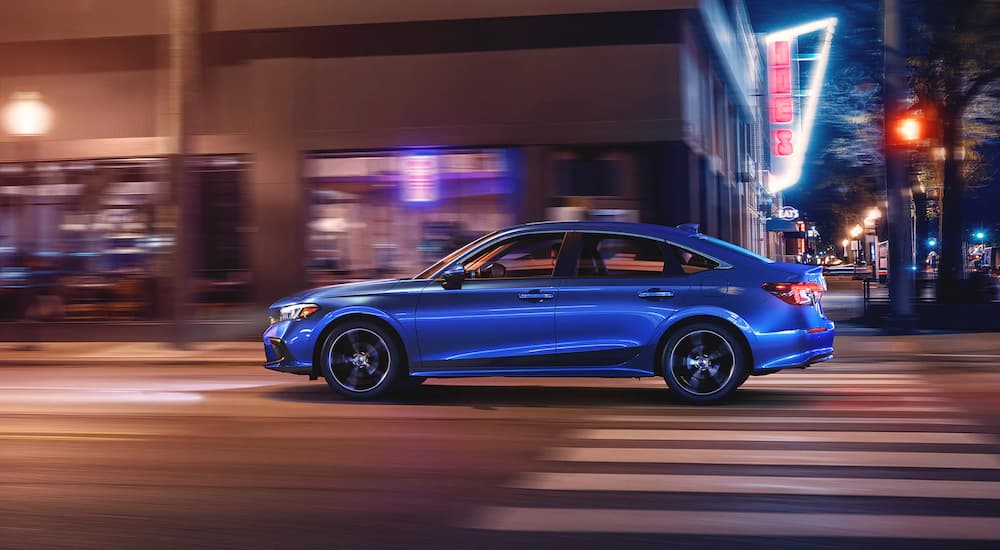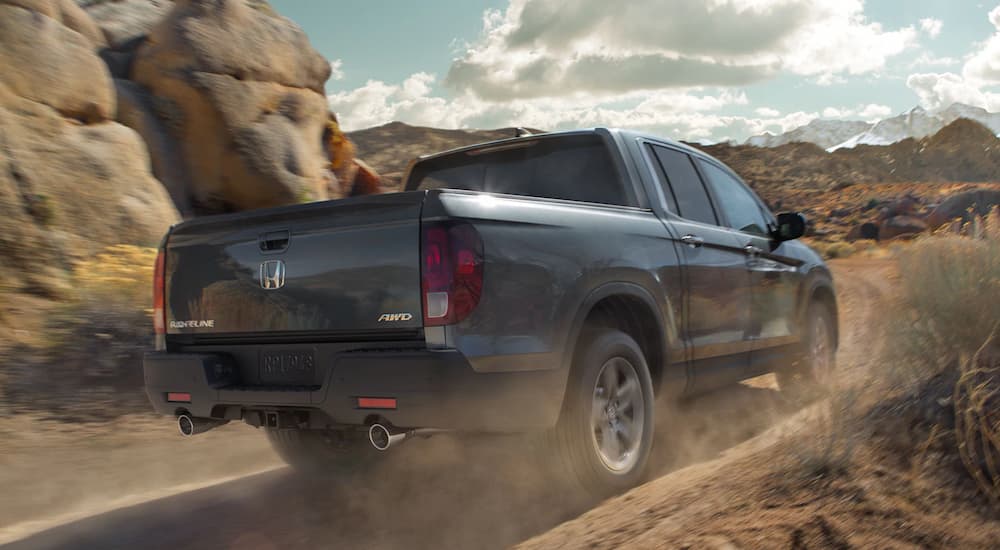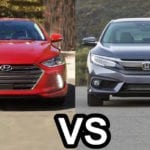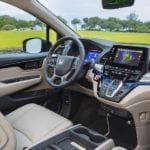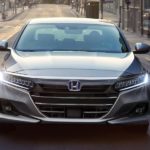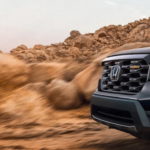The humble origins of the titan of the automotive industry can be traced all the way back to September 1948. The place of origin, Hamamatsu, Shizuoka Prefecture, on the main island of Honshu in Japan, serves as inspiration for the many automotive and musical companies that have offices and factories there, like Suzuki, Yamaha, Kawai, and of course, Honda. Nowadays, of course, there are Honda offices and factories around the globe, shipping their vehicles to dealerships, where you might go to look at, say, a Honda Pilot for sale.
Over seventy years later, Honda is still producing reliable, affordable vehicles, from cars, like the Accord, to SUVs, like the Pilot. This wasn’t always what Honda produced, however. In fact, Honda is a jack-of-all-trades when it comes to their products. Some might think that this would result in lower quality spread between products, but as you will see, Honda has taken care to only provide the top quality in its range of offerings, to our benefit. Honda’s beginnings led to a long-lasting relationship with the highest of expectations when it comes to their own work, and this has only proved to further their popularity and respect among those who appreciate and understand what it is to create and produce the best.
Humble Beginnings
In September 1948, a small factory on the island of Honshu began producing bicycle auxiliary engines, which is a fancy term for motorcycles. Honda made these engines for a few years before adding farm equipment to their repertoire in 1953, when they added an H-type farming engine. This was put to use in tillers and similar equipment, saving farmers time and energy that could be spent elsewhere on the farm, raising animals, growing an additional crop, or allowing fields to lie fallow. Later on, in 1959, Honda expanded its reach to North America, where it set up their initial overseas subsidiary in Los Angeles, California.
In 1962, Belgium welcomed Honda into the country and allowed it to open up the first overseas production site. 1963 is the year that Honda began producing automobiles, starting with the T360 mini-truck and the S500 sports car. Honda did not intend to rest on its laurels, so in 1972, they decided to adhere to the U.S. Clean Air Act, becoming the first manufacturing company to create a low-emission CVCC engine. This engine was notable for meeting all of the new emission requirements without requiring a catalytic converter, whose early designs sucked away a lot of horsepower. In 1981, Honda was recognized for creating the first vehicle navigation system, called the Honda Electro Gyrocator. The next year, they also released their country’s first vehicle that accommodated people with disabilities. Four years later, they would begin research on jet engines for aircraft. Throughout the next few decades, Honda was involved in racing, research, design, and the continued production of their beloved vehicles, including motorcycles, electric cars, fuel cell powered vehicles, and aircraft.
The Benefits Of Honda’s Pursuit Of Variety
It has been said that people who enjoy a variety of hobbies, passions, and interests aren’t capable of doing one thing really well. Instead, their general knowledge is seen as having lesser talent and fewer abilities. This is not the case. In fact, scientists have concluded that those that are more well-rounded than their peers have valuable insight, and are necessary when attempting to provide a creative solution.
Honda’s pursuits have opened up opportunities in the aircraft industry and motorcycle business, as well as its automotive branch. All of these vehicles can have an effect on the others, leading to new designs, potential areas of research, innovations, and improvements. For example, Honda’s car engineers helped design the Pacific Coast 800 motorcycle, which featured a car-like trunk instead of traditional saddlebags, and a dashboard that looked straight out of a contemporary Civic. All of Honda’s knowledge, expertise, and curiosity is being put to good use in their continued efforts to provide individuals with fast, safe aircraft, reliable, eco-friendly vehicles, and lean racing motorcycles that prove Honda has found the winning formula.
Honda also knows that it cannot function at its best without listening to its teams of engineers, researchers, factory floor workers, and others involved in their many projects. Hiring people who will improve upon your original product will result in forward momentum, toward the future of AI, robotics, infotainment, and eco-conscious behavior.
Honda’s Most Popular Models
Even now, over forty years later, Honda is still producing one of the most recognizable, popular vehicles in the world: the Honda Accord. Known for its durability, the Accord will most likely remain a staple of the automotive company’s roster as it continues to be revised and improved upon for its admiring public. Many individuals who had the fortune to acquire an Accord early on have remained loyal to Honda, singing the Accord’s praises for its comfortable interior, hardy exterior, and dependable, long-lasting performance.
Another of Honda’s incredibly popular vehicles is the Odyssey minivan, an evergreen choice for families on the go who appreciate quality, safety, and affordability. Thousands of families have fallen in love with the Odyssey, spending countless hours on road trips, vacations, and daily commutes, knowing that there’s room for everyone, and anything they might need.
The Honda Pilot is yet another popular choice, whether it is being used as the family commuter, a weekend getaway vehicle, or the friend groups’ preference of vehicle for a night out on the town. As a mid-size SUV, it’s the perfect companion for all of your trips. It looks sleek and stylish, can be taken off-road for more rustic adventures, and is equipped with plenty of up to date features.
The jack-of-all-trades outlook has awarded Honda with recognition among peers and customers alike. Take a look at the variety of awards they’ve won over the last several years, from top safety picks (due to their comprehensive, multifaceted safety package), to best vehicle purchase for the money (due to their insistence on quality parts as well as their dedication to improving quality of life for the general public), to all-around best car awards. The ability to diversify and explore multiple ideas and areas has put Honda at the top of the list for many, many companies and individuals around the world.
Being able to appeal to such a wide base surely means that Honda understands the true meaning of being a jack-of-all-trades: practicing multiple disciplines and performing them well. For instance, when it comes to safety features, some manufacturers only include the ones required by law, like airbags, horns, and high-beam headlights, unless you go above the base trim level to get things like lane departure warnings, rear traffic alerts, and a rearview camera.
Honda, on the other hand, has an entire suite of safety features and driver assistance features standard on every new model of the last few years. Not only does Honda include the regular features drivers have come to expect, but they also have a few that might surprise you. All Hondas include forward collision warning, a collision mitigation braking system, and a blind spot information system, as well as a road departure mitigation system, traffic sign recognition, and adaptive cruise control with low-speed follow.
From stem to stern and side to side, Honda has everyone inside and outside the vehicle covered for whatever situation may arise. That’s something that can’t be said for those who have a narrower focus, as opposed to Honda’s commitment to the jack-of-all-trades mentality that has served it so well since its inception.
Honda’s Future
With such a wide net, what does Honda’s future entail? Their vehicles, including the Honda Pilot, will continue to improve with the latest innovations and newest technology. Their forays into AI and robotics will set a pattern of using modern technology to aid those who are impaired, disabled, or who need occasional assistance, offering higher quality of life to its customers. With Honda’s focus on the environment, we may begin to see positive changes as other automotive companies look to their example and realize that these decisions will only benefit everyone.
Most recently, Honda has announced that all their new models after 2030 will be electric. Every new model produced will only be available as an electric vehicle, and as they are such a large portion of the industry, this will hopefully cause a major, positive change for the planet.
Honda’s future is a hopeful, optimistic one, filled with the latest advances, top notch experts, and of course, their stellar products. It will be interesting to see how they evolve, opening up more avenues on which to pursue their variety of interests and projects, along with continuing to provide the public with access to affordable, dependable vehicles like the Honda Pilot and Accord. Whether you’re interested in their aircraft technology, avatar-style remote-controlled robotics experiments, electric vehicles, or the newest Honda Pilot, you’ll have much to look forward to as far as Honda’s future is concerned.
